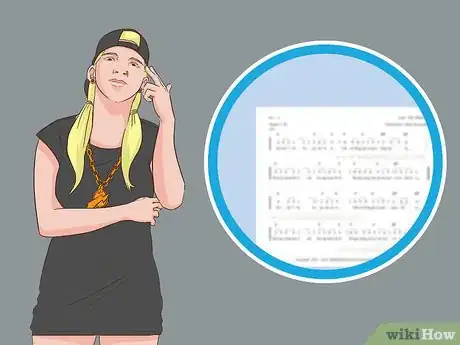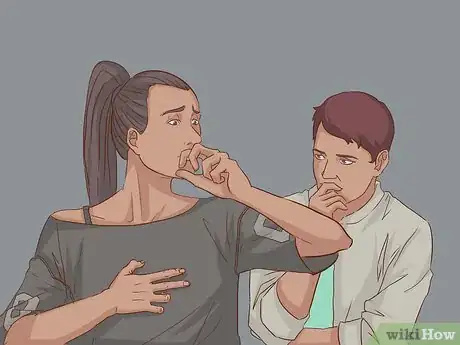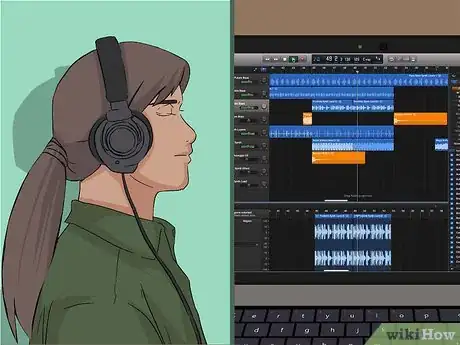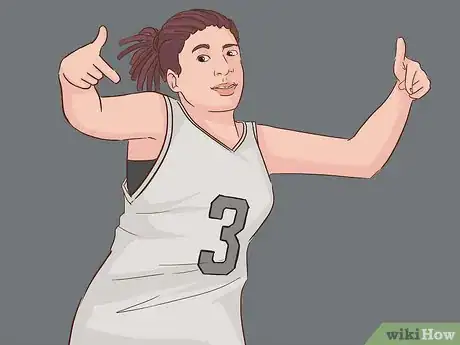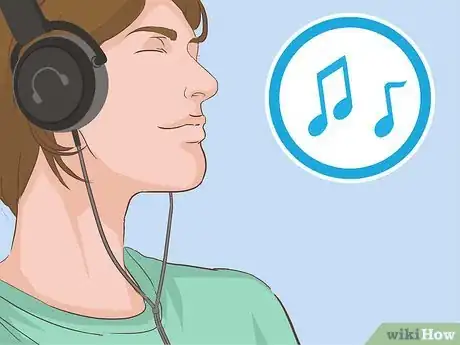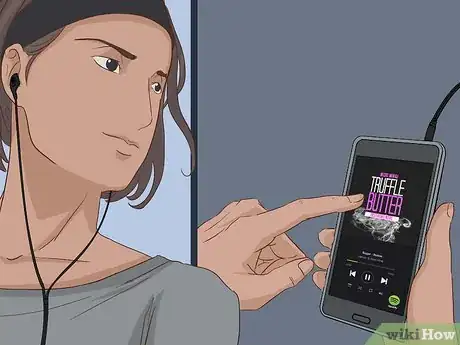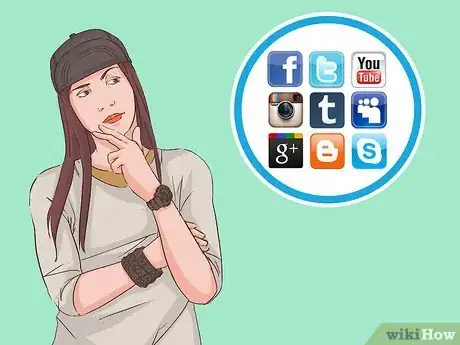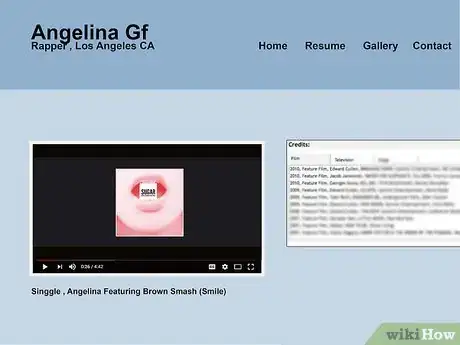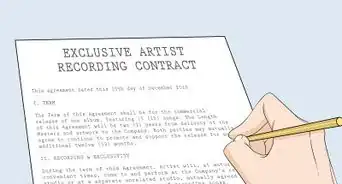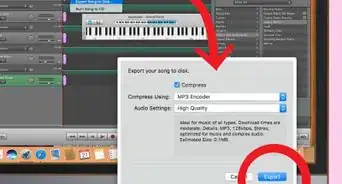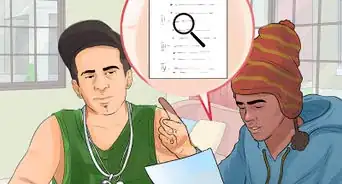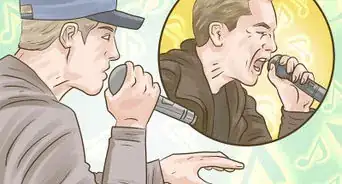This article was co-authored by wikiHow Staff. Our trained team of editors and researchers validate articles for accuracy and comprehensiveness. wikiHow's Content Management Team carefully monitors the work from our editorial staff to ensure that each article is backed by trusted research and meets our high quality standards.
There are 8 references cited in this article, which can be found at the bottom of the page.
wikiHow marks an article as reader-approved once it receives enough positive feedback. In this case, 84% of readers who voted found the article helpful, earning it our reader-approved status.
This article has been viewed 113,919 times.
Learn more...
If you've always dreamed of being a female rapper, there are many ways to pursue your ambitions even in a male-dominated field. In many ways, the path to becoming a female artist is similar to a male artist's path. You'll have to make connections, build your brand, and learn the basics. However, you also may have to deal with sexism on occasion in the scene. If you stay dedicated and work hard, however, you should be able to achieve your dream of becoming a female rapper.
Steps
Learning the Basics
-
1Have a list of rhymes in your head. If you want to rap, rhyming is key. Start simple. String together words in your head (bunny, funny, honey, money) that rhyme. Be on the lookout for rhymes throughout your day. Try to randomly find rhymes using words you see on signs and keep a running list of rhyming words. This will help rhyming come more naturally to you, making it easier to freestyle and write lyrics.[1]
-
2Learn basic song structure. When you're starting out, follow a traditional song structure to help yourself find your voice. You can experiment once you're familiar with the conventional structure. Songs are traditionally constructed like this: introduction, first verse, chorus, second verse, chorus, third verse, final chorus and outro.
- Intro and outros are a few words that may be spoken about the song and topic.
- Verses are usually 32 lines, while choruses are typically 16 lines. You can experiment a little bit with the amount of lines, however, as long as you keep them consistent.
Advertisement -
3Find your beat with an audio loop. Use a program like Garage Band to find your tempo by making a steady beat to play on a loop in the back of your song. Make sure the beat kicks, snares, and a bass line, which are traditional in rap.
- Play around with tempo. A typical rap song has a tempo between 80 and 120. A bouncy rap anthem meant to pump people up would have a quicker tempo, while a more somber song would have a slower one.
- Your beat will define your pace in your song, so choose a beat you think you can follow.
-
4Express yourself in your lyrics. When it comes to rapping, meaningful lyrics are important. Think about the topics that truly matter to you and compose lyrics and courses addressing these issues. As a female rapper, it may make sense to address issues surrounding feminism or womanhood in general. This can help you carve out a niche for yourself in the rap world.[2]
- Rap songs have a diverse range of topics, so feel free to write about a variety of subjects. Many writers write autobiographical lyrics, so you could tell a personal story. You could also write a rap anthem about a political issue that matters to you.
- You can gain a lot of attention if you write a song that speaks to a certain moment in time. Think about your feelings on a variety of political issues, especially women's issues like reproductive rights. If you're a politically-inclined person, these can be great subjects to rap about.
-
5Find a hook or chorus. Listen to a variety of rap songs and listen to the hook also known as the chorus, that play in the middle of a song. Think of something short and catchy for your chorus, something that will get people pumped up for your music.
- Choruses often have some kind of melody. Find a piano or keyboard and experiment with making a melody for your chorus. It can help to look up notes to the choruses of popular rap songs for inspiration.
- Keep the words a little simple in your chorus so people can sing along.
Establish Yourself as an Artist
-
1Listen to various female rappers for inspiration. Browse iTunes, Spotify, Pandora, or similar sites to find the big name female rappers in the field. Listening to artists like Foxy Brown, Nicki Minaj, and Lauryn Hill can help you gain inspiration for your own work and lyrics.[3]
- In addition to listening to songs by contemporary female rap artists, read interviews by artists you admire. Hearing artists talk about their process and philosophy can help you figure out your own goals as an artist.
-
2Practice regularly. There is no secret to improving at rap other than regular practice. Commitment is key to thriving in any skill, and rap is no different. Make time in your schedule to practice rapping each day so you can develop your style and skills.
- It can help to record yourself and listen back to your rapping. You can watch for places where you need to improve.
- Ask friends for feedback, especially friends interested in the rap scene.
-
3Choose a name that reflects your personality. Rappers usually go by a stage name, so pick something unique that reflects your goals and persona as an artist. Think about a name that stands out from the crowd, while using words and symbols that are personally meaningful to you.
- Rappers often use part of their real name as their stage name. Nicki Minaj, for example, was born "Onika." Think about using a shortened form of your own name or a nickname.
- Look for adjectives and phrases that describe who you are. These can be placed before or after your name to create a great stage name.
- Keep your name short and easy to remember.
Gain an Audience
-
1Target a specific audience. The rap scene is broad and appeals to many people. Therefore, it's important to narrow down your audience. Think about the kind of music you'll produce and what audience will be drawn to your works.[4]
- As a female artist, you may be producing work specifically for other women in the rap scene. Think about the general age group as well. Are you targeting a younger demographic or looking to appeal to older women.
- Think about how your music sounds. If you're making music that sounds like the kind of songs typically played in a club, you'll likely targeting a younger demographic. If you're making slower paced rap, you may be targeting a slightly older group.
-
2Get involved in the local rap scene. Start going to clubs that play rap music and attending rap shows frequently. Participate in open mics regularly and see if you can join any groups for young musicians, specifically rappers. The better known you are, the bigger your audience. Getting involved in the scene can help with exposure.
- As a female rapper, you may benefit from female-oriented shows and organizations. See if local clubs have performance nights designed for female artists specifically, for example, and join women's music groups.
-
3Challenge sexism. Unfortunately, there is still a lot of sexism in all corners of the music industry. As a female rapper, you want to help break the mold and reduce prejudice. If you experience sexist comments or behaviors, learn to address them promptly.[5]
- Challenge sexist statements when you hear them. If someone makes a generalization about women, say something like, "That hasn't been my experience at all, or the experience of many of my female friends."
- Disagree if you hear a comment you don't like and state your case clearly. For example, "I don't agree that women are too thin-skinned for the industry. I've taken a lot of criticism, and I'm still putting myself out there every day."
-
4Work on your social media presence. Create a Twitter, Facebook, and even a YouTube account using your rapper name. Post content related to upcoming shows and gigs and include relevant video clips of you rapping. You can also upload your songs to music sharing sites so fans can listen to your music.[6]
- Follow other female artists on social media and share their content. They may return the favor.
- If you're performing at an open mic night, let people know they can follow you on sites like Twitter and Instagram.
-
5Introduce yourself to people in the scene. Don't be shy about talking to others. Networking can help you go places in the music industry. When you're at clubs or shows, introduce yourself to other musicians, DJs, and producers. [7]
- An introduction can be very simple. Just walk up to someone and say something like, "I really liked your sound tonight. I'm also an upcoming rapper."
- Follow people you meet on social media or get their phone numbers. You never know when someone might reach out to you to do a collaboration.
Break into the Scene Professionally
-
1Make a website. You can use sites like WordPress to design your own professional website. Here, you can include links to your songs and performances, news about your upcoming shows, and basic contact information. Having a website is invaluable, as it will allow producers and managers to reach out to you to book gigs.
-
2Start booking gigs regularly. Look for shows in your area as well as open mics. The more you perform, the more likely you are to break out into the scene professionally. Audition for gigs whenever possible and try to perform as regularly as you can.
- Remember to make the most of every gig. Sell CDs afterwards and direct people to your web and social media pages.
-
3Work on your label and brand. Think about how you want to brand yourself as a female artist. Having a solid brand, that includes specific logs and labels, can help you get noticed by a record company.[8]
- Stories tend to sell, so think about your personal origin story. On your website, talk about how and why you decided to become a rapper. Maybe you grew up in a male-dominated family and rapping helped you find your voice.
- If you know graphic design, or have friends who are graphic designers, design some logos and symbols to represent your work. Having a symbol or logo attached to your name helps your brand become more recognizable.
-
4Reach out to record companies. Choose record companies that produce the kind of music you love and that is similar to your style. Look up the guidelines for submitting music to these companies and make a solid portfolio that showcases your best work. Many record companies may have open submission periods where they're on the lookout for new artists, so send in your materials then.[9]
- If you sample other tracks for some of your raps, you may want to leave these songs out of your portfolio. Record companies are often concerned about copyright laws.
Community Q&A
-
QuestionHow can I learn to rap like my idol?
 Community AnswerDon't just listen to their music; analyze it. Try to adapt to the certain sound and vibrations of their voice, and merge it with your own voice. Also, search for lyrics to your favorite song, and try to memorize them so you can practice them when you desire.
Community AnswerDon't just listen to their music; analyze it. Try to adapt to the certain sound and vibrations of their voice, and merge it with your own voice. Also, search for lyrics to your favorite song, and try to memorize them so you can practice them when you desire. -
QuestionWhat should I look for in a good mentor?
 Community AnswerFind someone who doesn't mind listening and criticizing your work. Make sure said person isn't just saying it's good to keep you happy. Have them truly and thoroughly analyze your art.
Community AnswerFind someone who doesn't mind listening and criticizing your work. Make sure said person isn't just saying it's good to keep you happy. Have them truly and thoroughly analyze your art. -
QuestionWhat age is best to start rapping?
 Community AnswerThere is no specific age. If you feel like you're ready, then do your thing.
Community AnswerThere is no specific age. If you feel like you're ready, then do your thing.
References
- ↑ https://www.youtube.com/watch?v=xpc7fGblUm4
- ↑ https://online.berklee.edu/takenote/5-steps-to-start-writing-lyrics/
- ↑ http://www.billboard.com/articles/columns/the-juice/5923011/ladies-first-31-female-rappers-who-changed-hip-hop
- ↑ http://diymusician.cdbaby.com/musician-tips/musicians-whos-your-audience-how-do-you-know/
- ↑ http://everydayfeminism.com/2015/01/responses-to-sexist-microaggressions/
- ↑ https://www.dittomusic.com/blog/10-essential-social-media-tips-for-musicians-and-bands
- ↑ https://thump.vice.com/en_us/article/d7jy7q/advice-for-young-women-looking-to-break-into-the-music-industry-from-discwomans-moma-ps1-panel
- ↑ https://heroic.academy/unconventional-guide-getting-signed-record-label/
- ↑ https://heroic.academy/unconventional-guide-getting-signed-record-label/
